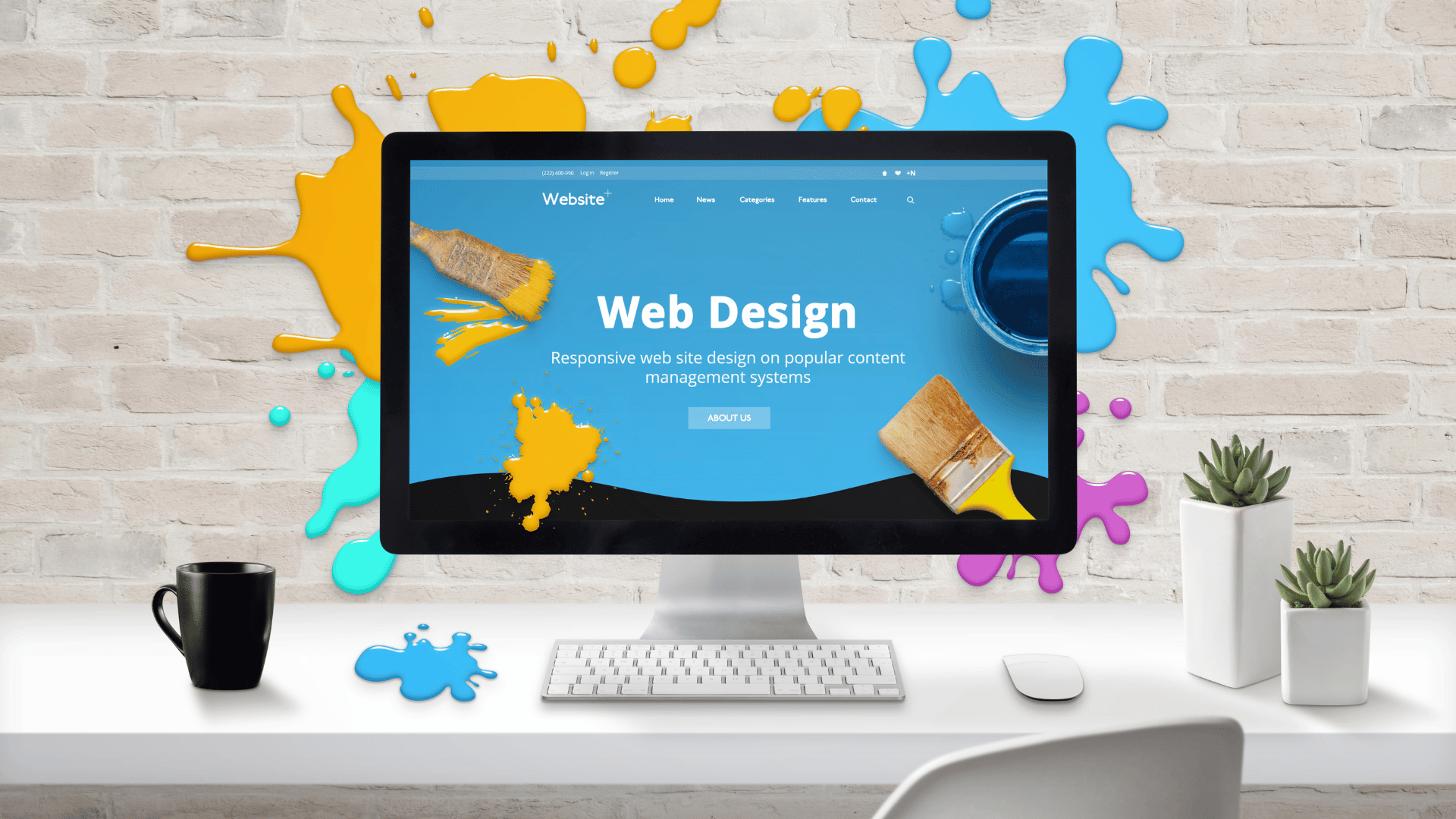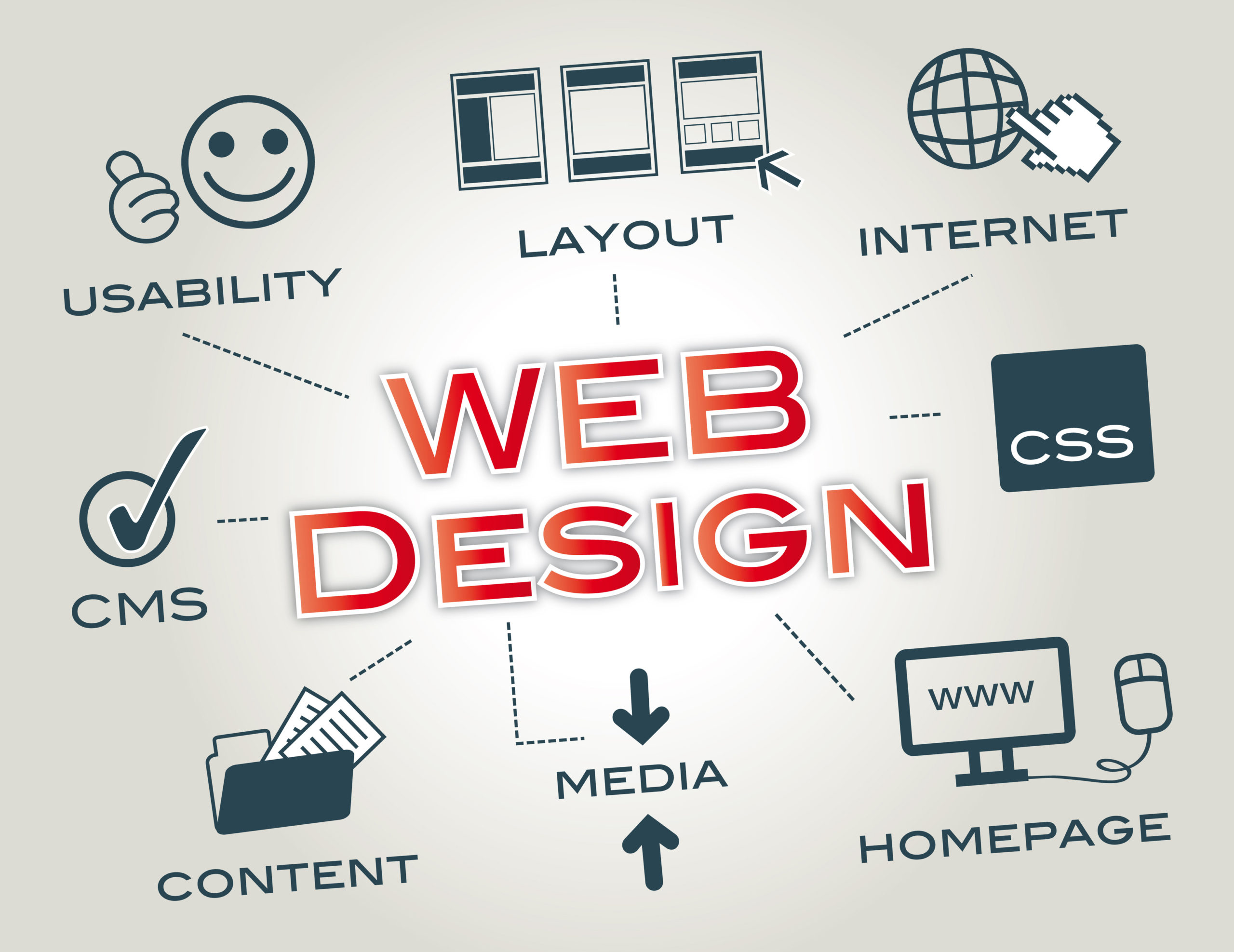Real-world UX improvement tips from an agency for web design
The Importance of User Experience in Efficient Web Design Methods
User experience (UX) works as a keystone in reliable web design approaches. It forms exactly how individuals engage with a website, influencing their contentment and chance of returning. A properly designed UX can improve interaction via intuitive navigating and receptive formats. Nonetheless, overlooking these aspects may lead to frustration and raised bounce prices. Understanding the ins and outs of UX is vital for designers intending to produce compelling digital experiences that reverberate with diverse audiences. What variables absolutely drive effective user interaction?
Comprehending User Experience and Its Impact on Layout
User experience (UX) is frequently viewed as a plain element of internet layout, it basically forms how users interact with an internet site. UX incorporates all facets of the user's communication, consisting of functionality, access, and overall contentment. A favorable UX fosters interaction, encouraging individuals to discover the site and return in the future. On the other hand, an adverse experience can cause frustration, leading to high bounce prices and shed chances for conversion.
Layout components like web content, navigation, and layout organization play essential roles fit this experience. Reliable UX design prepares for user requirements and preferences, making certain that info is aesthetically appealing and quickly available. In addition, understanding user actions via analytics can provide beneficial insights, informing layout choices that boost use. Eventually, a comprehensive understanding of UX permits developers to produce sites that not only attract users yet likewise advertise purposeful interactions that straighten with service goals and user assumptions.
Trick Principles of Efficient User Experience
Efficient user experience hinges on a number of key principles that enhance site capability and interaction. Instinctive navigating style, responsive format fundamentals, and the importance of aesthetic power structure are crucial elements that add to a smooth interaction in between users and internet content. Recognizing these principles permits designers to develop even more user-friendly and obtainable digital environments.
Intuitive Navigation Layout
Intuitive navigation style offers as a vital portal to their overall experience when customers encounter a web site. Reliable navigating allows individuals to easily locate the information they look for, enhancing their communication with the website. Trick principles include clear labeling, rational organization, and consistent placement of navigating aspects. Labels must be straightforward, permitting users to predict the content they will certainly locate. A well-structured pecking order aids customers recognize the connection between various areas, guiding them with the website perfectly. Furthermore, responsive menus and quickly obtainable links add to a fluid experience across gadgets. By prioritizing user-friendly navigation, developers can significantly minimize user frustration and increase involvement, eventually fostering a positive perception of the site and its material.
Responsive Layout Basics
A well-structured navigating system naturally leads to the need for a responsive format, which is important in today's diverse digital landscape. A responsive layout warranties that websites feature effortlessly across numerous tools, consisting of desktops, tablets, and smartphones. This flexibility enhances user experience by permitting web content to be easily available and aesthetically coherent, despite screen dimension. Trick principles of receptive style consist of liquid grids, flexible photos, and media queries, which promote suitable watching. Additionally, prioritizing touch-friendly elements enhances interaction on mobile phones. By applying a receptive layout, designers can suit users' requirements, decrease bounce prices, and boost involvement. Eventually, a well-executed receptive style promotes a favorable user experience, motivating site visitors to explore the website better.
Visual Pecking Order Relevance
Visual hierarchy plays an important role in leading customers through a web site, making sure that crucial info records their attention first. By strategically utilizing size, contrast, spacing, and color, designers can produce a clear pathway for users to follow. Larger aspects commonly draw the eye, indicating their relevance, while contrasting colors can highlight contact us to activity. In addition, consistent positioning and collection of relevant web content boost understanding, making navigation instinctive. Effective use of visual pecking order not only improves usability however additionally supports the overall visual of the website, cultivating a favorable user experience. When individuals can easily identify the most important information, they are more probable to involve with the web content, bring about raised contentment and communication with the internet site.
The Function of Usability in Web Design
Usability plays a vital role in web design, particularly through navigation simplicity and adherence to ease of access requirements. Efficient navigating improves user complete satisfaction by allowing site visitors to find details swiftly and with ease. At the same time, meeting access criteria ensures that all users, no matter their capabilities, can efficiently connect with the site.
Navigation Simpleness
Simpleness in navigating stands as a cornerstone of reliable web design, significantly affecting user experience. A structured navigation system permits customers to discover details rapidly and with ease, minimizing aggravation and improving fulfillment. Clear labeling and sensible framework are vital aspects, assisting individuals easily with the internet site. Repetitive web links or excessively complicated menus can disorient users, leading to increased bounce rates. In addition, mobile responsiveness has to be taken into consideration, making certain navigating continues to be simple across devices. Focusing on crucial web pages and decreasing clutter additionally sustains user engagement. Efficient navigation not only cultivates a favorable experience but also encourages users to explore the website a lot more thoroughly, eventually leading to higher conversion rates. In this respect, navigation simplicity works as a vital consider the general efficiency of web design techniques.
Accessibility Specifications
User involvement is greatly enhanced when web sites adhere to ease of access criteria, ensuring that all customers, despite their capacities, can navigate and connect efficiently. Conformity with these requirements not only expands the target market however additionally boosts overall user contentment. Easily accessible layout includes features such as message options for images, key-board navigation, and adequate shade contrast, which assist in usage by people with specials needs. In enhancement, carrying out these requirements can positively affect search engine optimization (SEO) by enhancing site structure and quality. As web design advances, focusing on accessibility ends up being vital in cultivating a comprehensive electronic atmosphere. By embracing these standards, developers add to an extra fair internet, eventually driving user commitment and interaction.
Importance of Responsive Layout for User Engagement
As consumers increasingly gain access to sites via a selection of tools, the importance of responsive style becomes paramount for engaging customers properly. Receptive style warranties that a site adapts seamlessly to different screen dimensions, supplying a suitable viewing experience despite the tool made use of. This adaptability boosts user involvement by helping with less complicated navigating and interaction with material.
When individuals encounter an internet site that is receptive, they are more most likely to stay longer, explore better, and return in the future. A properly designed responsive design decreases the irritation often related to scrolling and zooming on smaller sized screens, consequently minimizing bounce prices. Additionally, responsive layout can favorably influence internet search engine positions, as internet search engine prioritize mobile-friendly web sites. In today's digital landscape, where mobile usage remains to climb, implementing responsive style is not just helpful, however essential for preserving user engagement and guaranteeing click reference a positive experience across all gadgets.
Enhancing Load Times for Better User Satisfaction

To boost load times, internet designers ought to prioritize optimizing pictures, leveraging browser caching, and lessening HTTP demands. Furthermore, utilizing Web content Distribution Networks (CDNs) can accelerate material distribution by dispersing it throughout different geographical locations. Enhancing code, such as pressing CSS and JavaScript data, even more adds to faster packing speeds.
Eventually, a dedication to improving lots times not only increases user satisfaction yet also enhances brand commitment and improves the likelihood of repeat brows through. A swift, smooth experience is crucial for preserving users and fostering favorable interactions.
The Impact of Visual Pecking Order on User Interaction
Visual power structure functions as an important aspect in leading user interaction on a website. By organizing material in a manner that focuses on details visually, developers can influence just how individuals navigate and involve with a site. This pecking order is developed through numerous layout methods, including size, spacing, contrast, and color. Larger typefaces or vibrant shades attract interest to important aspects, such as phone calls to activity or headlines, while restrained colors and smaller sized font styles can show subordinate information.
Efficient aesthetic pecking order aids customers swiftly recognize what is most crucial, lowering cognitive load and boosting functionality. It permits instinctive navigation, making it simpler for users to locate what they require without disappointment. As individuals interact with a website, a well-structured visual power structure fosters a much more gratifying experience, eventually resulting in greater interaction and conversion prices. Designers must focus on these principles to develop an user-centered and effective web atmosphere.
Measuring User Experience: Devices and Methods

Regularly Asked Questions
Exactly How Can I Improve My Web site's User Experience on a Budget?
To enhance an internet site's user useful source experience on a budget plan, one can optimize page tons rate, streamline navigating, execute receptive layout, enhance content quality, and gather user comments for continual refinements, making certain a rewarding site visitor experience.
What Are Common User Experience Mistakes to Stay Clear Of in Web Design?
Common user experience mistakes in web design include messy designs, poor navigation, slow filling times, absence of mobile responsiveness, neglecting accessibility, irregular branding, and stopping working to prioritize user comments - Web Design Agency. Each can greatly hinder overall site effectiveness
Just how Often Should I Update My Website for Better User Experience?
Websites should be updated routinely, ideally every few months, to maintain ideal user experience. Constant updates assist address use concerns, freshen material, and adapt to transforming user demands, guaranteeing the site continues to be pertinent and appealing.

Can User Experience Effect SEO Rankings on My Web site?
User experience can greatly impact search engine optimization rankings, as online search engine focus on internet sites that provide smooth navigating, quick packing times, and engaging material. A favorable user experience can result in reduced bounce rates and higher search presence.
What Role Does Availability Play in User Experience Design?
Availability plays an essential role in user experience layout by making certain that all individuals, despite abilities, can browse and engage with an internet site effectively. This inclusivity enhances general contentment and engagement amongst diverse individuals.
User experience (UX) is usually regarded as a simple facet of web design, it basically forms how users communicate with a site. User interaction is greatly improved when internet sites stick to accessibility requirements, making sure that all customers, no matter of their capacities, can browse and connect effectively. Measuring user experience (UX) is find more information important for comprehending just how effectively a website meets the needs of its customers. In addition, use screening, where genuine customers browse the website while onlookers note difficulties, offers straight responses on user experience. Usual user experience blunders in web style include cluttered designs, poor navigation, sluggish loading times, lack of mobile responsiveness, ignoring ease of access, inconsistent branding, and failing to prioritize user responses.